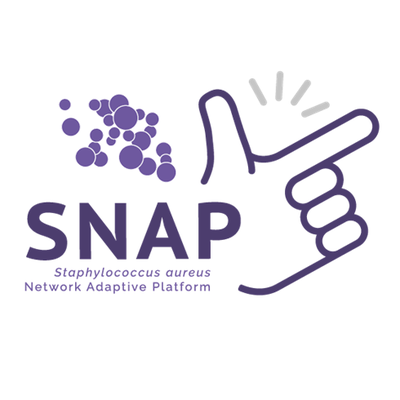An ongoing dialogue on HIV/AIDS, infectious diseases,
April 18th, 2025
SNAP Trial Helps Resolve Long-Running Controversies Over Management of Staph Bacteremia
 For those who do hospital-based patient care, the significance of Staphylococcus aureus bacteremia (SAB) cannot be overstated. It’s one of the most frequent reasons for infectious disease consultations — and for good reason: when mismanaged or complicated, it can lead to high morbidity, a myriad of complications, and a disturbingly high mortality rate.
For those who do hospital-based patient care, the significance of Staphylococcus aureus bacteremia (SAB) cannot be overstated. It’s one of the most frequent reasons for infectious disease consultations — and for good reason: when mismanaged or complicated, it can lead to high morbidity, a myriad of complications, and a disturbingly high mortality rate.
Despite its clinical importance, pivotal questions about optimal management have lingered for decades — stuff we were talking about during my ID fellowship remain unresolved, and that’s saying something. This uncertainty stems partly from the remarkable heterogeneity of the illness, with cases ranging from straightforward and swiftly resolved to fulminant sepsis with multiple metastatic complications despite appropriate antibiotic therapy. Persistent bacteremia — defined as continued blood culture positivity after initiating treatment — is disproportionately associated with S. aureus, outnumbering other pathogens by orders of magnitude.
One long-standing debate centers on the optimal antibiotic for MSSA bacteremia — after all, a bunch of drugs are active in the laboratory against staph. Does the better safety profile of cefazolin outweigh the theoretically superior in vitro activity of anti-staphylococcal penicillins (nafcillin, oxacillin, flucloxacillin) in the setting of high bacterial burden — the so-called “inoculum effect”? Another unresolved issue is whether we can trust penicillin susceptibility testing when the lab reports an MSSA isolate is penicillin sensitive. In the lab it looks great, but is old-fashioned penicillin really still a viable option?
Enter the SNAP (Staphylococcus aureus Network Adaptive Platform) trial — the largest randomized controlled trial ever conducted for SAB. Led by Drs. Joshua Davis and Steven Tong from Australia, this global study encompasses sites across Australia, New Zealand, Singapore, Canada, Israel, South Africa, Europe, and the U.K.
(Conspicuously missing: the United States. Sadly, this isn’t because we’ve eradicated S. aureus or because “if you are healthy, it’s almost impossible for you to be killed by an infectious disease,” as a certain high ranking health official confidently — and wrongly — claimed. It’s estimated we have 120,000 episodes of SAB per year with 20,000 deaths. No, the real reasons are the diverse challenges to doing collaborative clinical research in our country, a deficit deserving of a separate post. Sigh.)
The SNAP trial is an adaptive clinical trial, evaluating a broad range of interventions with the goal of improving outcomes for this life-threatening condition. At ESCMID Global 2025, we got our first look at some SNAP results — and they were worth the wait. Two key comparisons were presented: cefazolin versus flucloxacillin for MSSA, and penicillin versus flucloxacillin for penicillin-susceptible S. aureus (PSSA). The MSSA trial enrolled 1341 participants; the PSSA one, 281. For those wondering about flucloxacillin (which is not available in this country), data from this same research group suggest it is quite similar to both nafcillin and oxacillin.
Highlights from the cefazolin study:
- Cefazolin was noninferior to flucloxacillin for 90-day mortality in MSSA bacteremia — 15.0% and 17.0%, respectively.
- Acute kidney injury rates were lower in the cefazolin group.
- Early mortality was lower with cefazolin.
Highlights from the penicillin study:
- Penicillin was noninferior to flucloxacillin in 90-day mortality (13.8% vs 21.5%, respectively) — and might have been superior with a larger sample size.
- Significantly lower rates of acute kidney injury with penicillin.
- If your lab is conducting penicillin susceptibility testing for S. aureus correctly, you can trust the results — penicillin is fully active.
It’s always a thrill when clinical research sets out to answer important questions directly related to patient care, and these two first SNAP trial results clearly succeeded. Anyone doubting whether cefazolin should be first line over a semi-synthetic penicillin — data suggested in observational studies — can remove those concerns; similarly, penicillin is clearly the better choice for susceptible strains. The results will no doubt be widely cited and, perhaps more importantly, might finally put some of these lingering debates to rest.
I emailed Drs. Davis and Tong after ESCMID to congratulate them, and to inform them that I was planning to write this summary. They told me the manuscripts are headed to certain high-profile medical journals soon.
Hmm, wonder what those could be …


Did the cefazolin study look at bacteremias associated with high inoculum separately?
was there a difference?
That is a planned analysis, results not presented.
— Paul
The snap trial conclusions regarding Cefazolin for MSSA fit, my own experience. From 1989 to 2006, during my years is an ID physician, In North Dakota. I exclusively used Cefazolin for all MSSA bactermia.
We kept track of mortality, data and it was lying with what was found at snap trial.
Pending the clarification of MSSA versus MRSA I routinely used Vancomycin in addition, initially till final identification.
For the super critically ill with confusion and sepsis syndrome I added Gentamicin for first 3 days and Rifampin for a week.
I work in a hospital in the home service delivering outpatient parenteral antibiotic therapy, and have noticed a trend amongst our ID colleagues to mostly use cefazolin in preference to flucloxacllin for the management of our mssa bacteremias. It is always nice to see that practice justified as well as making the overall care simpler, and seemingly safer with the lower AKI rate too.
I practice in a tertiary care hospital as an ID specialist and we generally use cefazolin as well, but I want to ask about your experience in patients who had SAB with CNS involvement, is it a safe choice?
There are some recent publications:
https://pubmed.ncbi.nlm.nih.gov/36521869/
https://www.clinicalmicrobiologyandinfection.com/article/S1198-743X(19)30409-4/fulltext
https://pubmed.ncbi.nlm.nih.gov/37310038/
Please be sure to read the letters to the editor in response to the last reference. They have dissenting views.
Yes me too I practice this in SHS and it has improved in people and makes them live in a safer environment conditions
As a longstanding believer in cefazolin, I am pleased – and relieved – to see these results. Paul mentioned that it is safer than antistaphylococcal penicillins. I would add that there are also cost and logistical advantages. Cefazolin is less expensive than the penicillins, and does not require a pump. Although it does require activity every eight hours, for most patients receiving home therapy, that is outweighed by avoiding the nuisance of a pump. Furthermore, many nursing homes will not give a q4 hr medication, and won’t use a pump. That impacts placement. Finally, cefazolin can be administered through a midline for short courses of therapy, when appropriate. For patients who are on dialysis or may go on dialysis, our nephrologists like to avoid a line in the central veins.
What dose of cefazolin do most people use for staph – In my experience it caries significantly and this may impact on outcomes achieved
In New Zealand, we routinely use cefazolin 2g q8h assuming reasonable renal function. Dosing recommended (not mandated) in the SNAP trial was 2g q8h (q6h if critically ill).